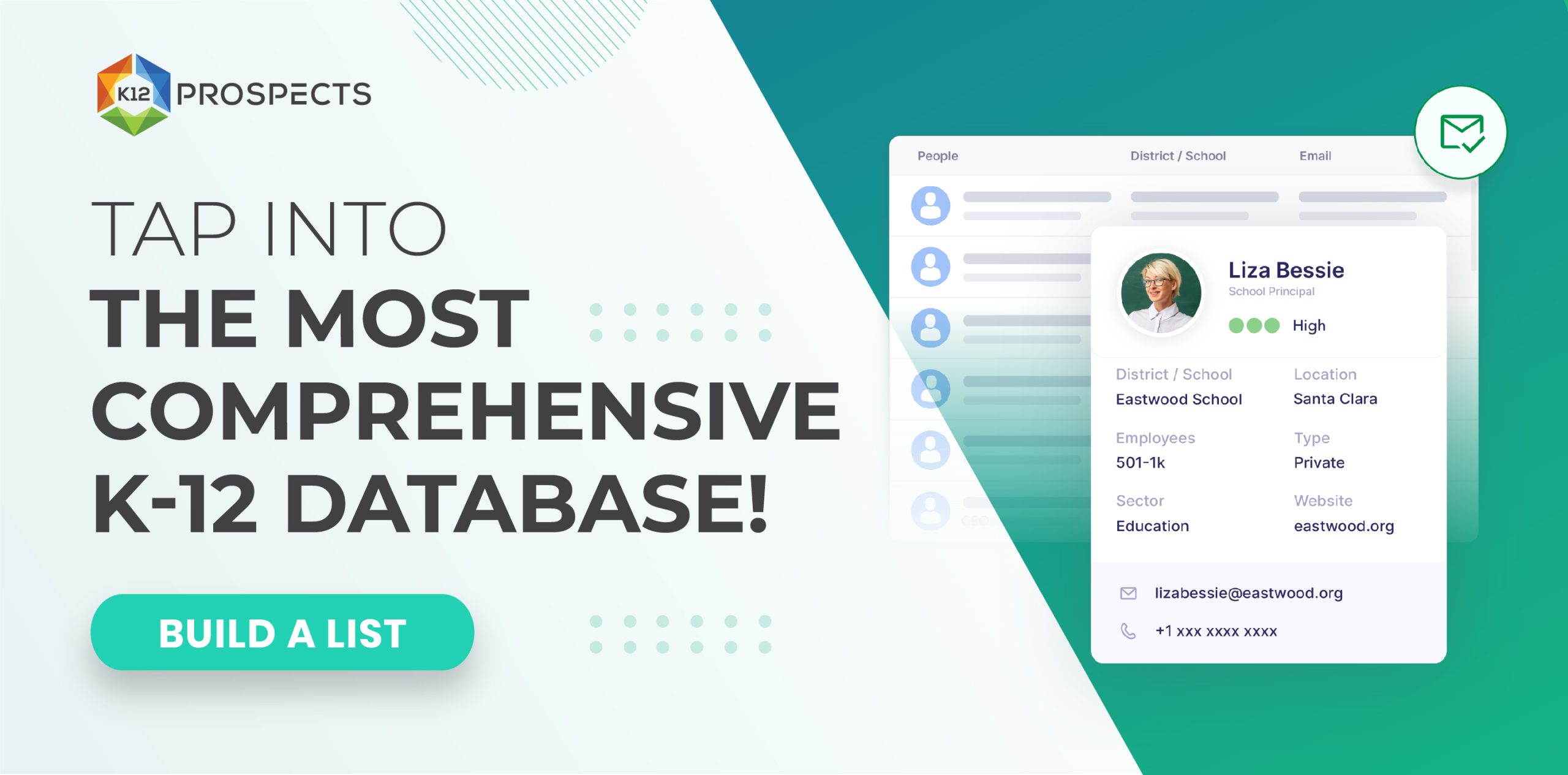Persona Maps for 2025 Buying Committees: Who Signs vs. Who Influences

In the dynamic landscape of K-12 education sales, understanding buyer personas is crucial for vendors aiming to navigate complex purchasing processes effectively. Persona maps are detailed profiles that outline the motivations, pain points, and decision-making roles of key stakeholders in school districts. As we head into 2025, these maps become even more vital amid trends like tightening budgets due to expiring federal stimulus funds, increased emphasis on data-driven decisions, and the integration of AI and social-emotional learning (SEL) tools. For companies selling to the K-12 market, such as those partnering with k12prospects.com, mastering these personas can mean the difference between a stalled pitch and a successful contract.
Buying committees in K-12 districts typically involve a mix of signers—those with authority to approve and finalize purchases—and influencers, who shape recommendations through expertise or daily needs. Signers often include high-level administrators like superintendents or chief financial officers (CFOs), while influencers range from department heads to frontline staff. This distinction is key: influencers drive the “why” behind a purchase, but signers control the “how” and “when.” In 2025, with enrollment shifts and economic uncertainties, committees are leaning toward collaborative, evidence-based evaluations, prioritizing ROI and alignment with student outcomes.
Drawing from recent insights, this article explores persona maps across five critical areas: IT, Academics, Finance, Athletics, and Student Success. By tailoring strategies to these roles, vendors can build targeted campaigns that resonate, ultimately improving sales efficacy in the competitive K-12 arena.
IT: Navigating Digital Transformation
In IT purchasing, 2025 trends highlight modernization efforts, with districts investing in AI tools, cybersecurity, and data analytics to support hybrid learning environments. The procurement process often starts with identifying needs like device upgrades or software integrations, influenced by post-pandemic tech demands.
Key signers in IT are typically district technology officers (CTOs) or assistant superintendents for business services, who approve budgets and contracts for large-scale implementations. They focus on strategic alignment, ensuring purchases meet long-term goals like equity and efficiency.
Influencers include IT directors, who evaluate vendor proposals for technical fit, and teachers or principals, who provide feedback on usability in classrooms. For instance, in districts like Mt. Diablo Unified, centralized processes involve IT officials demonstrating value beyond price, often through pilots.
Vendors should create personas emphasizing CTOs’ need for data security and scalability, while addressing influencers’ concerns about ease of integration. Marketing tips: Offer webinars on ROI calculators and case studies showing reduced downtime, positioning your product as a strategic partner in 2025’s data-literate era.
| Role | Type | Key Motivations | 2025 Trends Impact |
| CTO/Assistant Superintendent | Signer | Budget approval, strategic fit | AI integration, cybersecurity priorities |
| IT Director | Influencer | Technical evaluation, vendor reliability | Data analytics tools for enrollment tracking |
| Teachers/Principals | Influencer | Usability, classroom impact | Hybrid learning support amid budget cuts |
Academics: Aligning with Instructional Priorities
Academic purchases in 2025 are shaped by a push for evidence-based curricula, with districts grappling to align spending with instructional needs amid staffing turnover and cultural debates over materials. Signers are often chief academic officers or superintendents, who finalize decisions after procurement reviews, ensuring compliance and fiscal responsibility. They prioritize products backed by pilot tests and research.
Influencers dominate here: District curriculum staff (60% influence), teachers (56%), and principals (52%) recommend resources based on alignment with standards and student engagement. In smaller districts, teachers’ input is even stronger (64%), piloting products to address needs like phonics or math improvements.
For sales success, develop personas highlighting curriculum directors’ focus on workflow integration. Use targeted demos and testimonials to engage influencers, emphasizing how your tools reduce burnout and boost outcomes in a resource-constrained year.
| Role | Type | Key Motivations | 2025 Trends Impact |
| Chief Academic Officer/Superintendent | Signer | Compliance, evidence-based ROI | Outcomes-based contracting for equity |
| Curriculum Staff/Directors | Influencer | Standards alignment, instructional quality | SEL-infused curricula amid well-being focus |
| Teachers/Principals | Influencer | Practicality, student achievement | Data-informed choices post-stimulus cliff |
Finance: Managing Budget Challenges
Finance departments in K-12 face 2025’s fiscal cliff, with trends toward data innovation and grant-seeking to offset funding changes. Purchases here involve budgeting software, financial planning tools, or audit services.
Signers include superintendents or CFOs, who authorize expenditures district-wide, balancing fixed costs like pensions with strategic investments. They seek high-ROI solutions amid enrollment declines. Influencers are business managers or finance staff, who analyze options for cost-effectiveness, often collaborating with instructional teams to align spending. Superintendents also influence through oversight.
Vendors: Craft personas around CFOs’ pain points like forecasting accuracy. Provide whitepapers on grant management and peer comparisons to build trust, helping districts navigate uncertainty.
| Role | Type | Key Motivations | 2025 Trends Impact |
| Superintendent/CFO | Signer | Fiscal responsibility, ROI | Performance-based funding shifts |
| Business Managers | Influencer | Cost analysis, alignment | Data literacy for budget optimization |
| District Administrators | Influencer | Cross-department integration | Enrollment-driven resource reallocation |
Athletics: Enhancing Program Excellence
Athletics purchasing in 2025 emphasizes sustainability and technology, with decisions on equipment, facilities, or training tools influenced by ethical standards and performance metrics. Athletic directors act as primary signers, orchestrating buys based on program needs like uniforms or safety gear, ensuring alignment with values.
Influencers include coaches, staff, and athletes, who provide input on quality and functionality through stakeholder engagement. This collaborative approach uses data analytics for value assessment.
Sales strategies: Target athletic directors with CRM demos and sustainability case studies, addressing influencers’ needs for durability to foster long-term partnerships.
| Role | Type | Key Motivations | 2025 Trends Impact |
| Athletic Director | Signer | Program alignment, ethics | Tech for performance tracking |
| Coaches/Staff | Influencer | Quality, team needs | Sustainability in sourcing |
| Athletes | Influencer | Safety, innovation | Inclusive equipment amid Title IX focus |
Student Success: Supporting Holistic Well-Being
Student success services in 2025 prioritize SEL and interventions, with purchases for counseling tools or special ed resources driven by well-being trends.
Signers are superintendents or special ed coordinators with budget authority for district-wide initiatives. Influencers encompass curriculum directors, principals, and teachers, who recommend based on IEP management and engagement. Data-informed practices guide choices.
Vendors: Build personas focused on personalization, offering webinars and trials to influencers, aligning with 2025’s emphasis on experiential learning.
| Role | Type | Key Motivations | 2025 Trends Impact |
| Superintendent/Special Ed Coordinator | Signer | Budget discretion, outcomes | SEL grants integration |
| Curriculum Directors/Principals | Influencer | Personalization, workflows | Student-led initiatives |
| Teachers | Influencer | Time-saving, engagement | Well-being amid absenteeism |
Leveraging Persona Maps for Sales Success
By mapping these personas, vendors can craft nuanced strategies—tailoring content to influencers’ daily challenges while proving ROI to signers. In 2025, success lies in collaborative selling, using data and pilots to navigate committees. For k12prospects.com clients, this approach not only educates but empowers better market penetration, driving meaningful impact in K-12 education.



